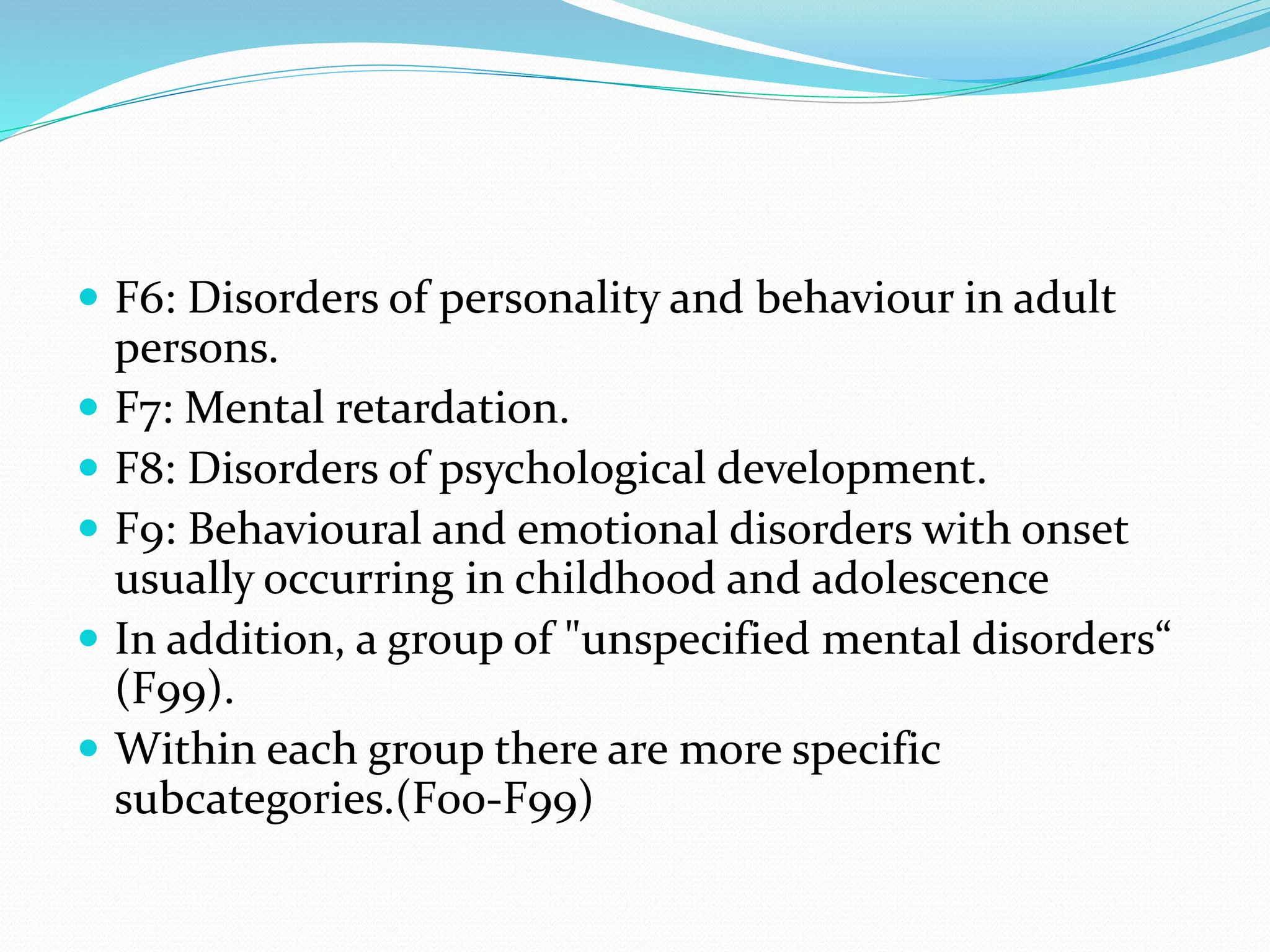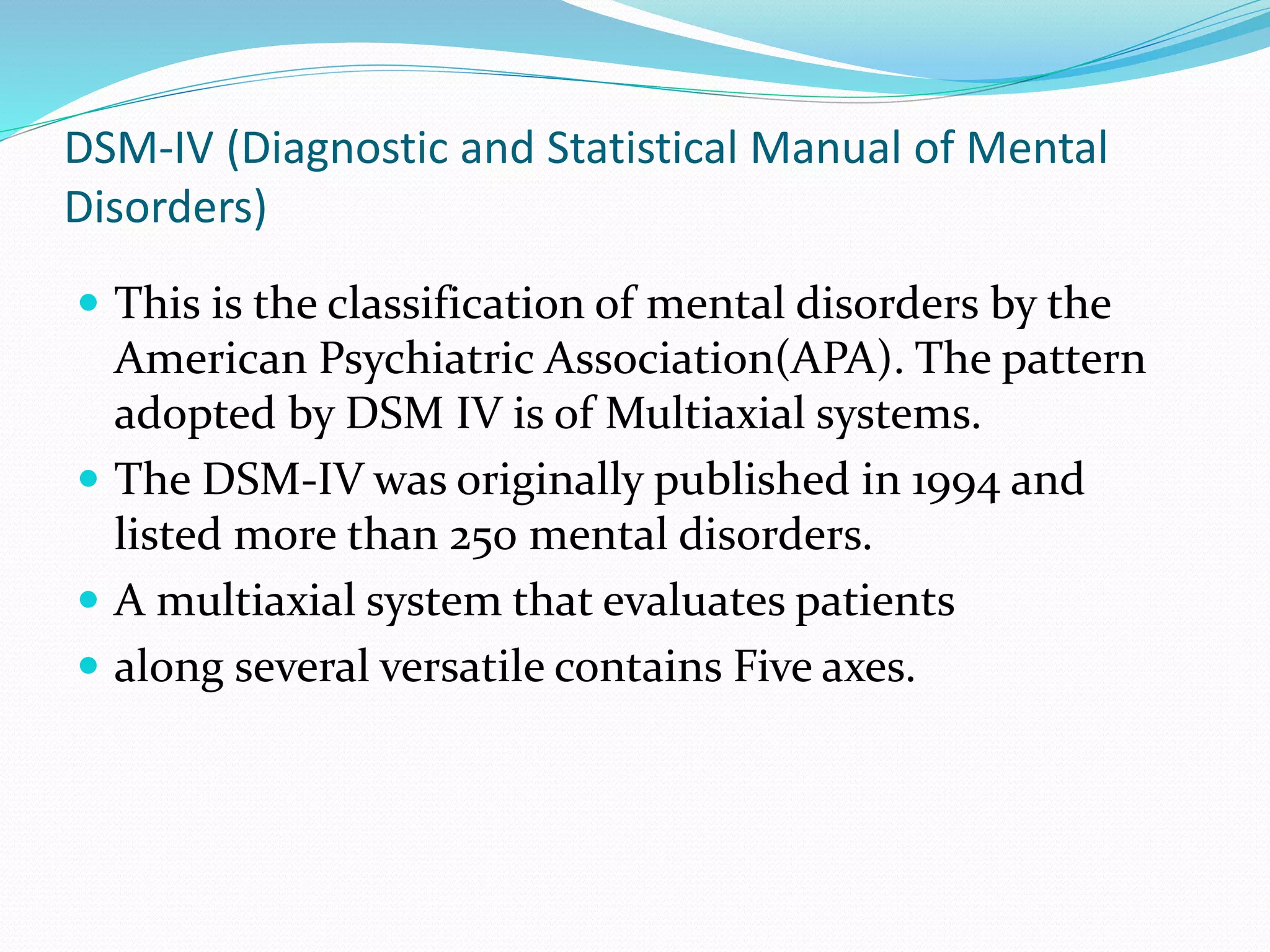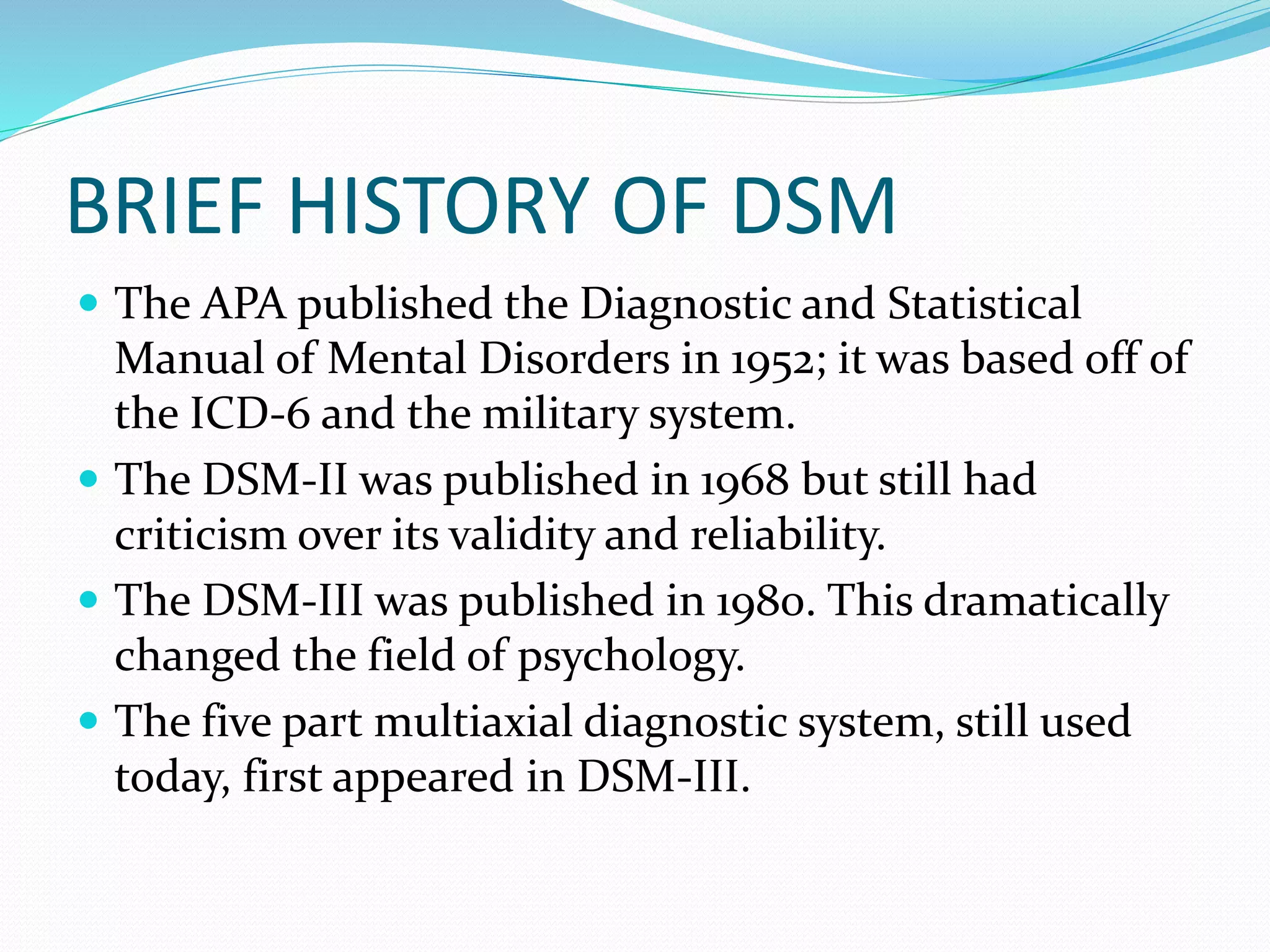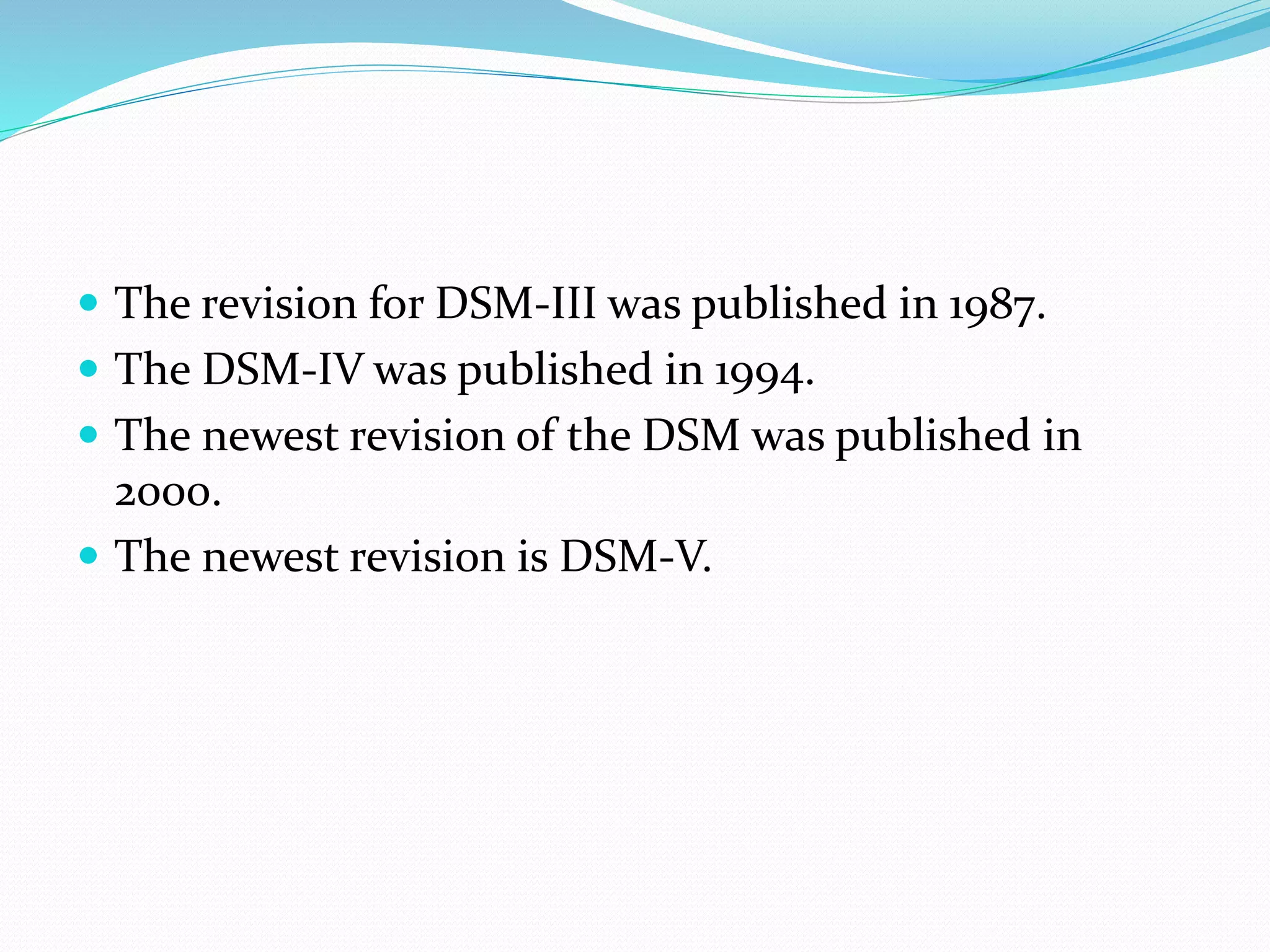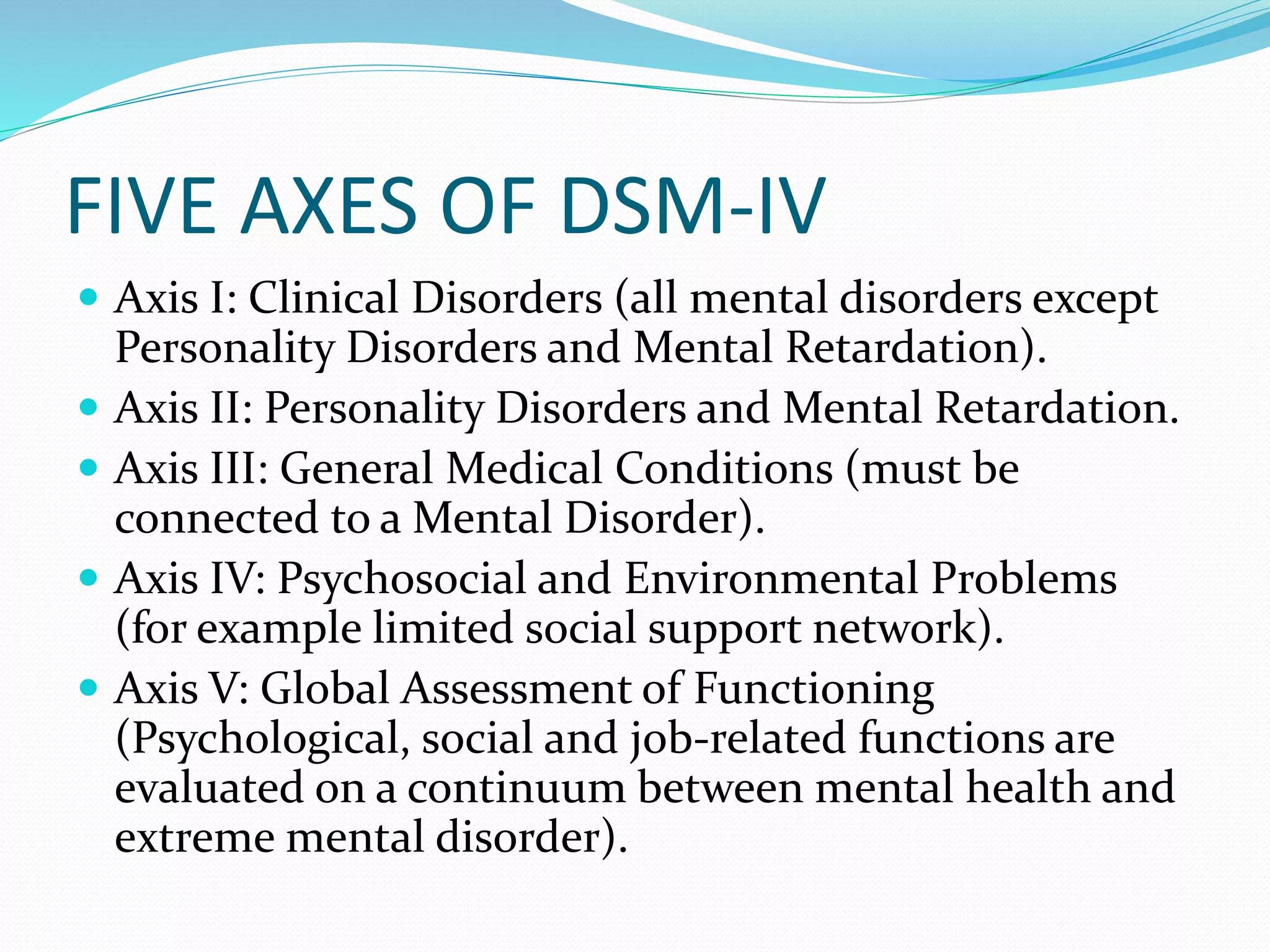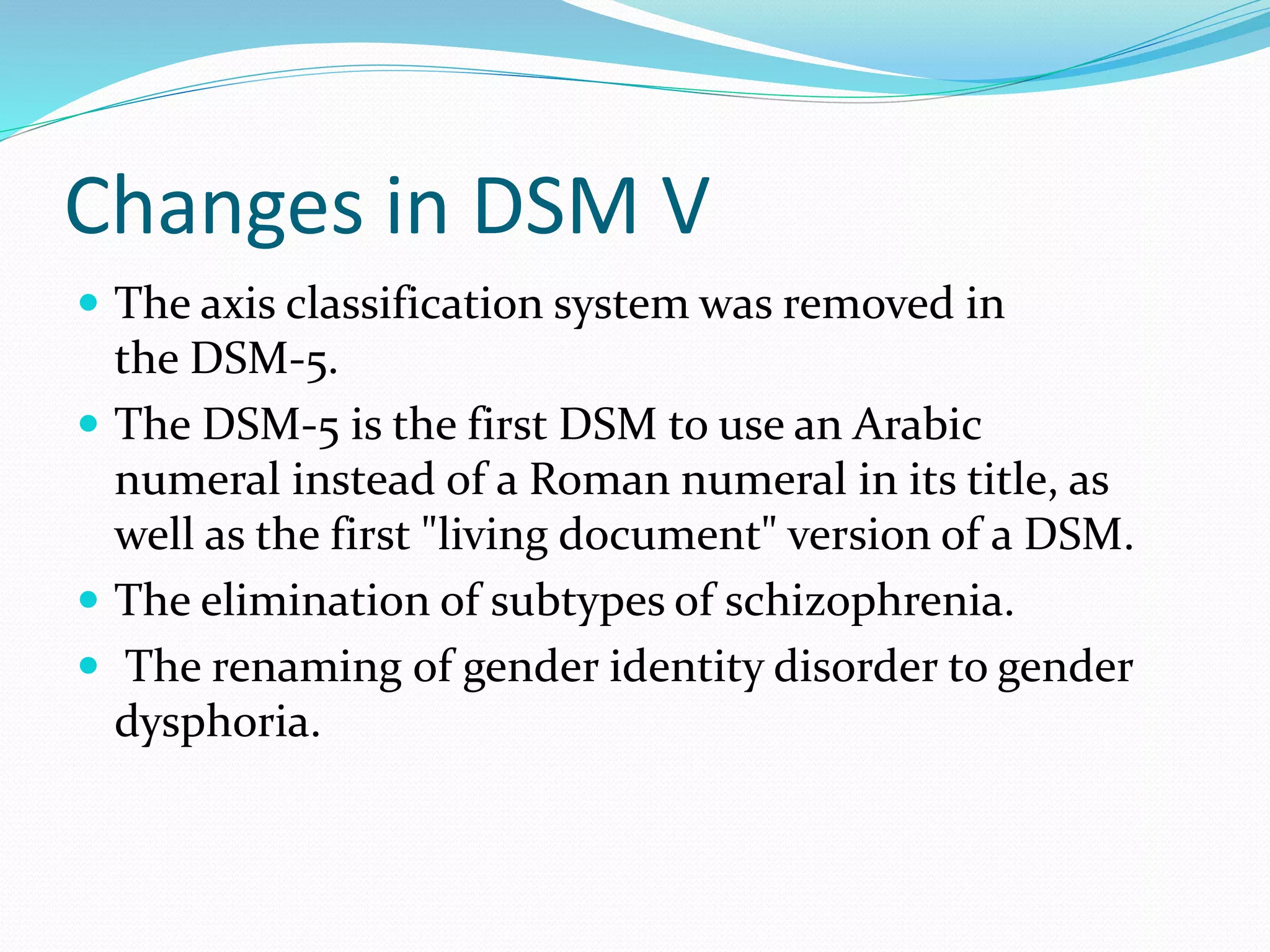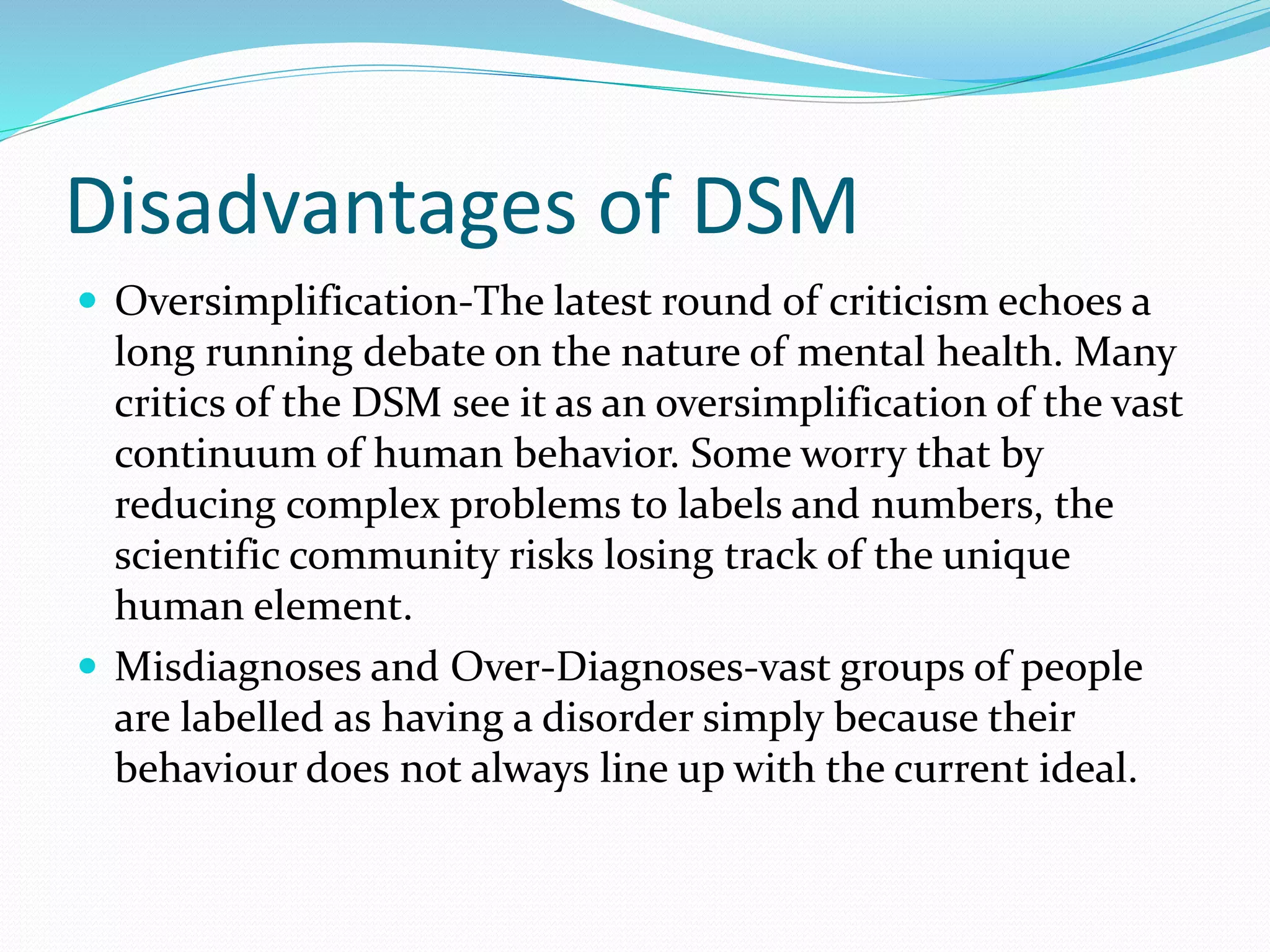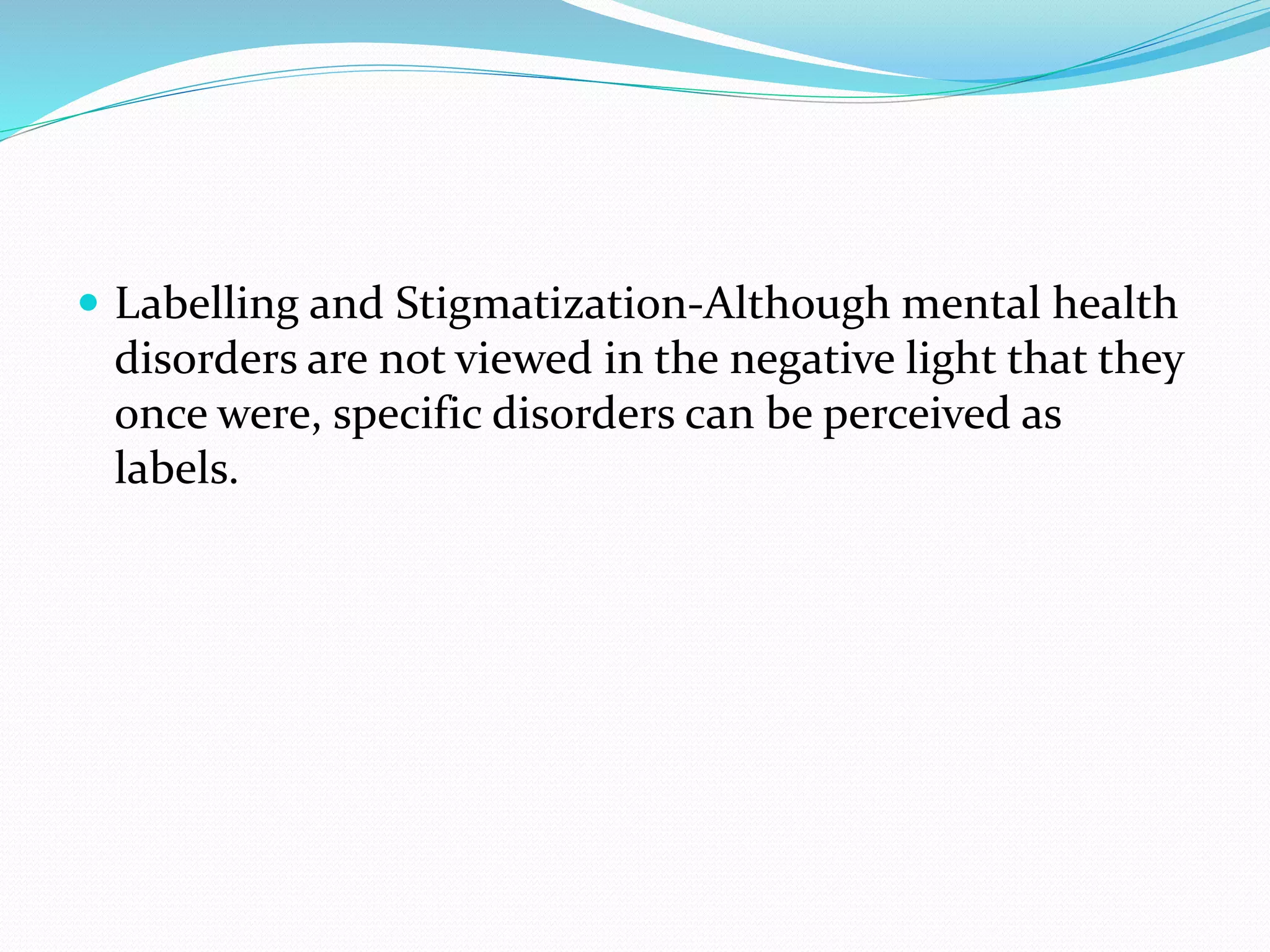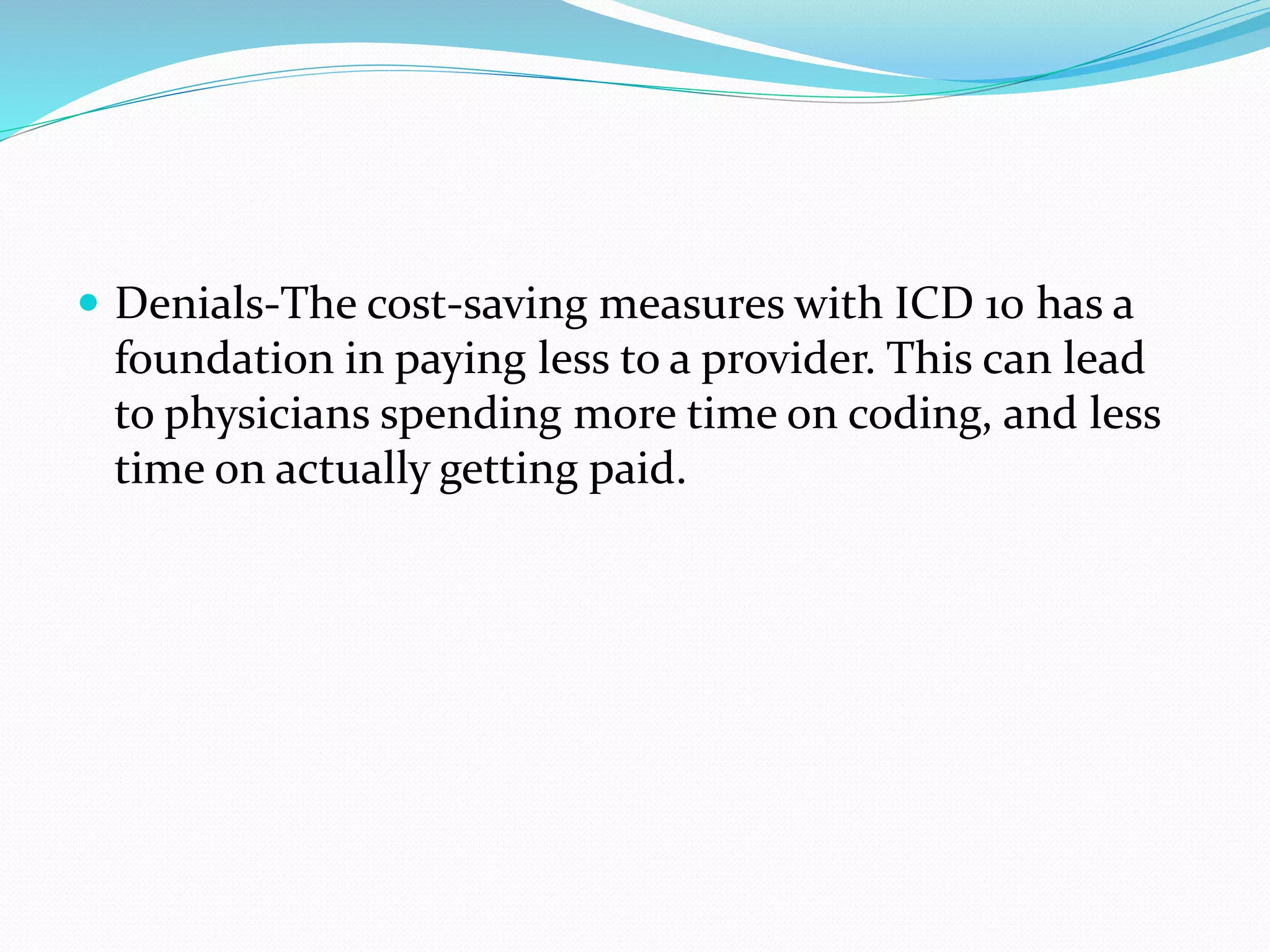This document discusses two major classification systems for mental disorders: ICD-10 and DSM-IV. ICD-10 is maintained by the World Health Organization and provides an international standard for defining and classifying diseases. DSM-IV is published by the American Psychiatric Association and utilizes a multi-axial system to evaluate patients across several domains. Both systems aim to provide consistent diagnoses but have disadvantages like oversimplification, misdiagnoses, and potential stigmatization. ICD-11 was adopted in 2019 and DSM-5 removed the axis system and made other changes.
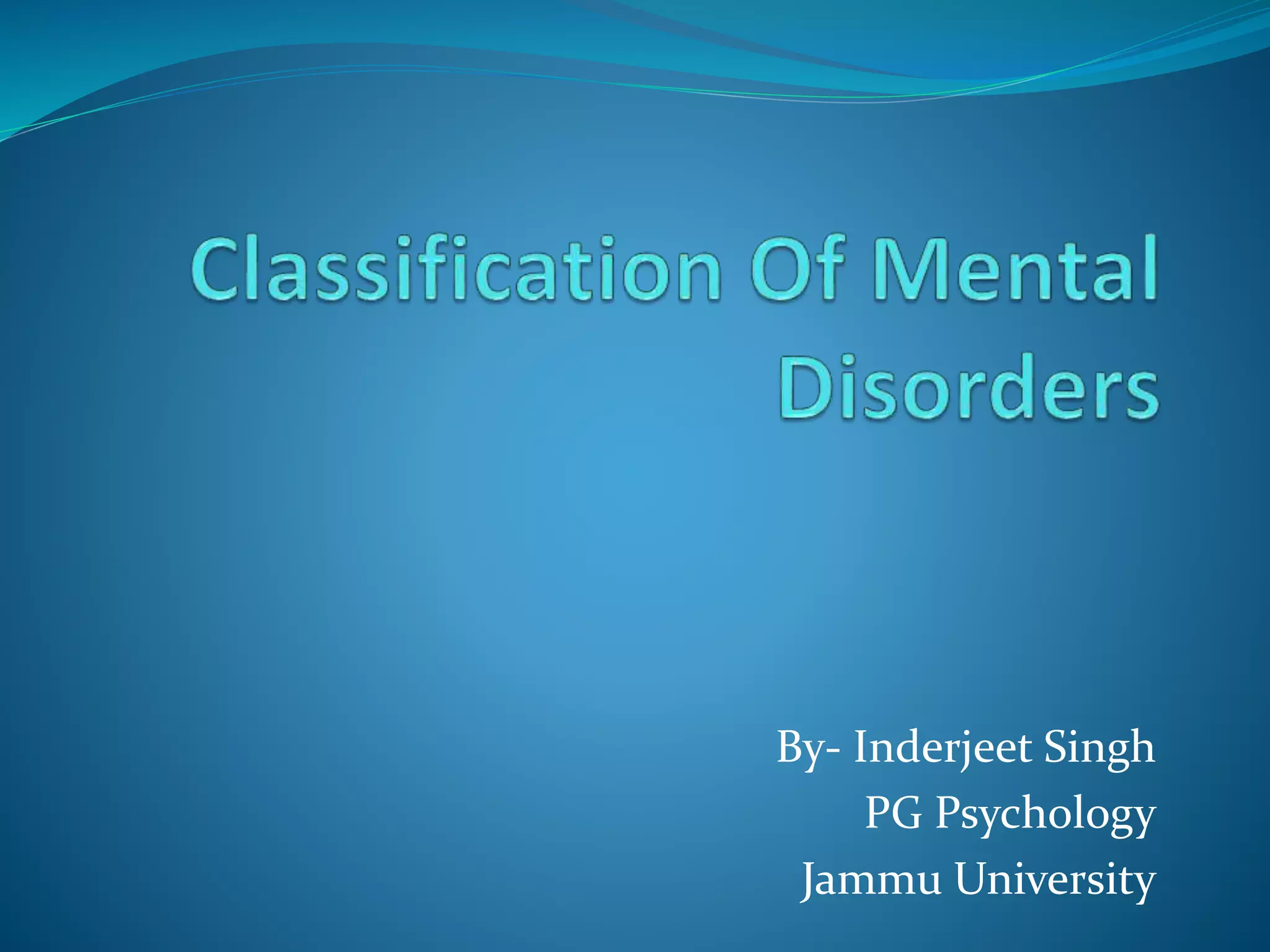

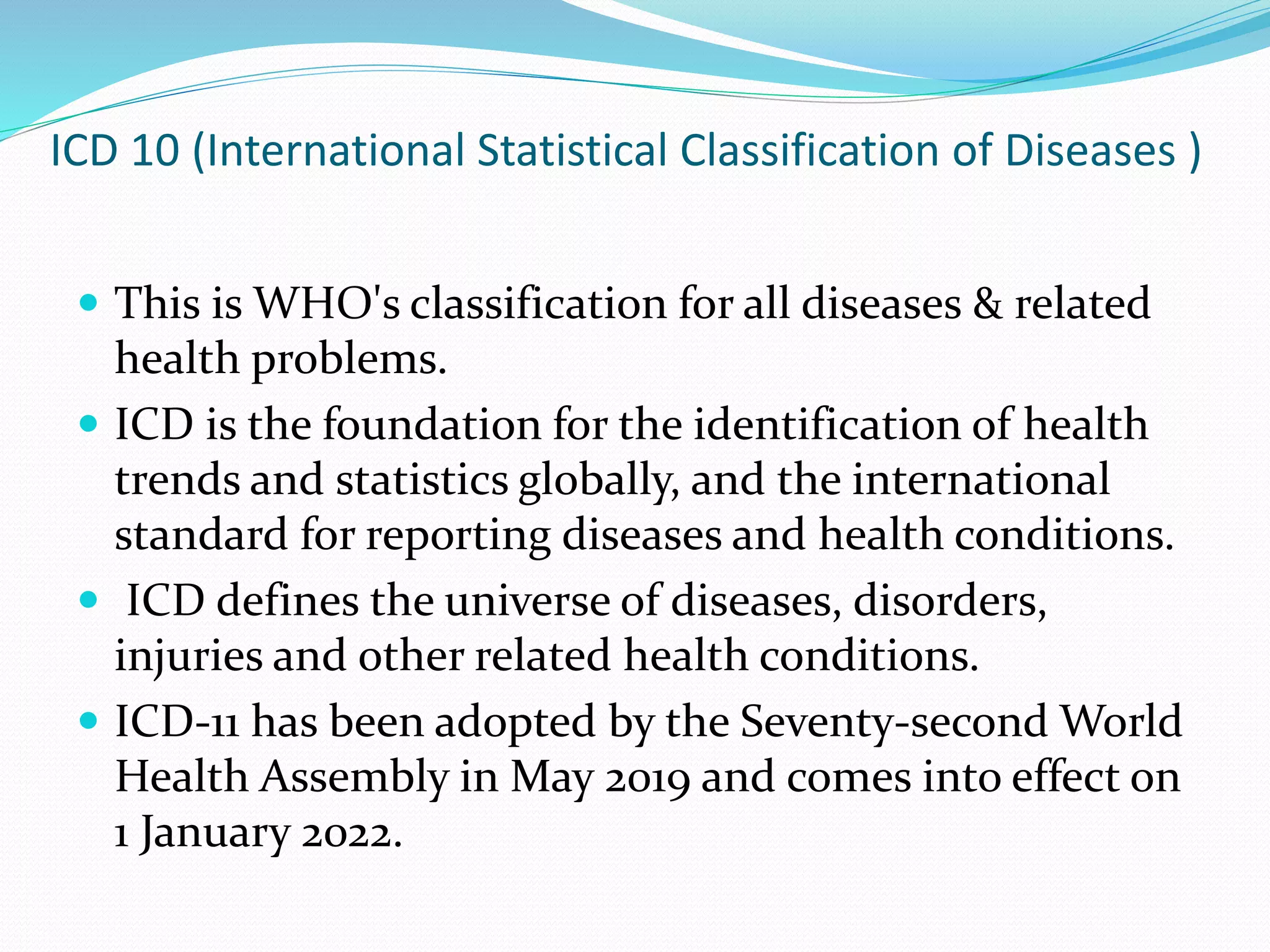
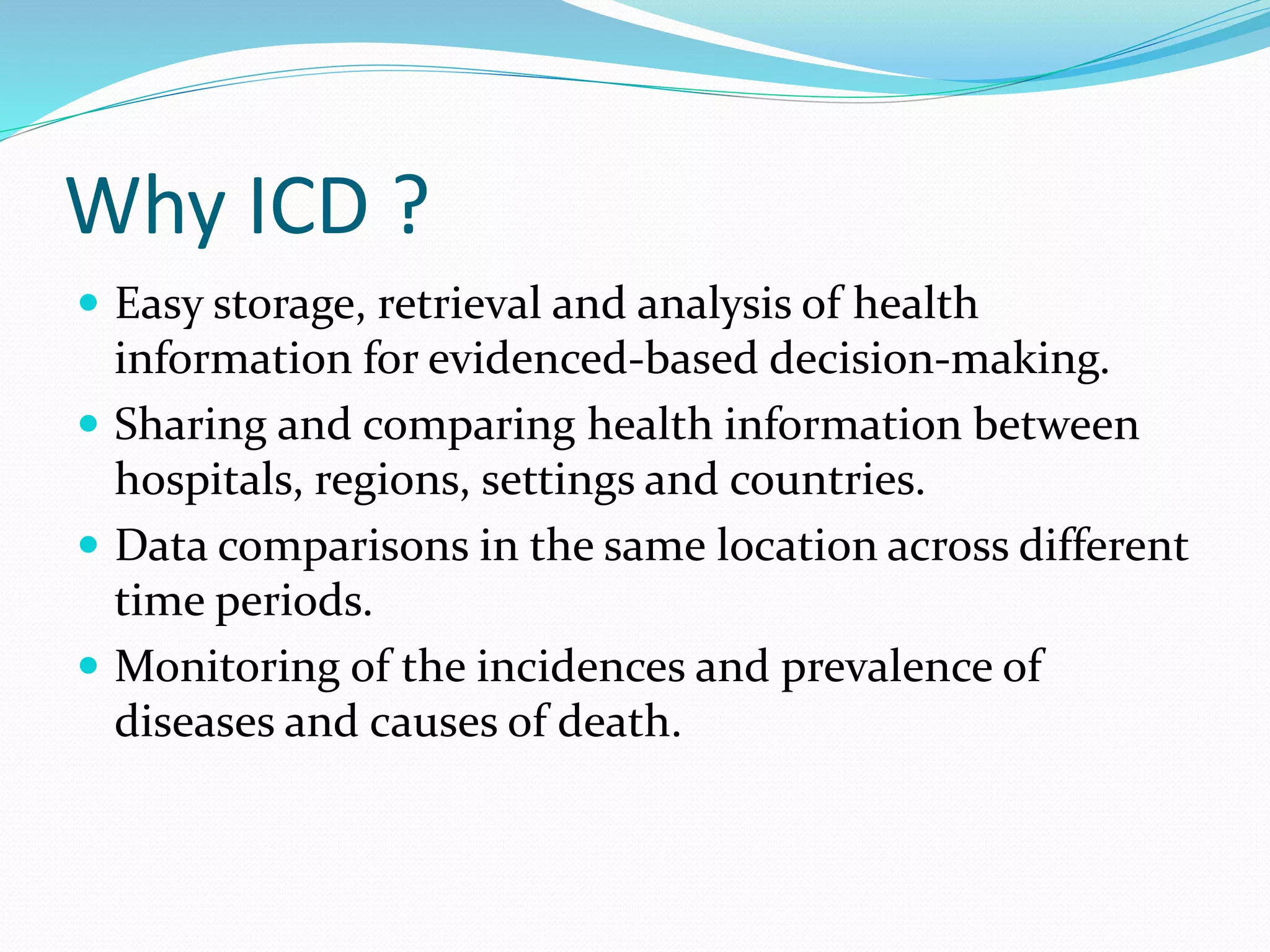
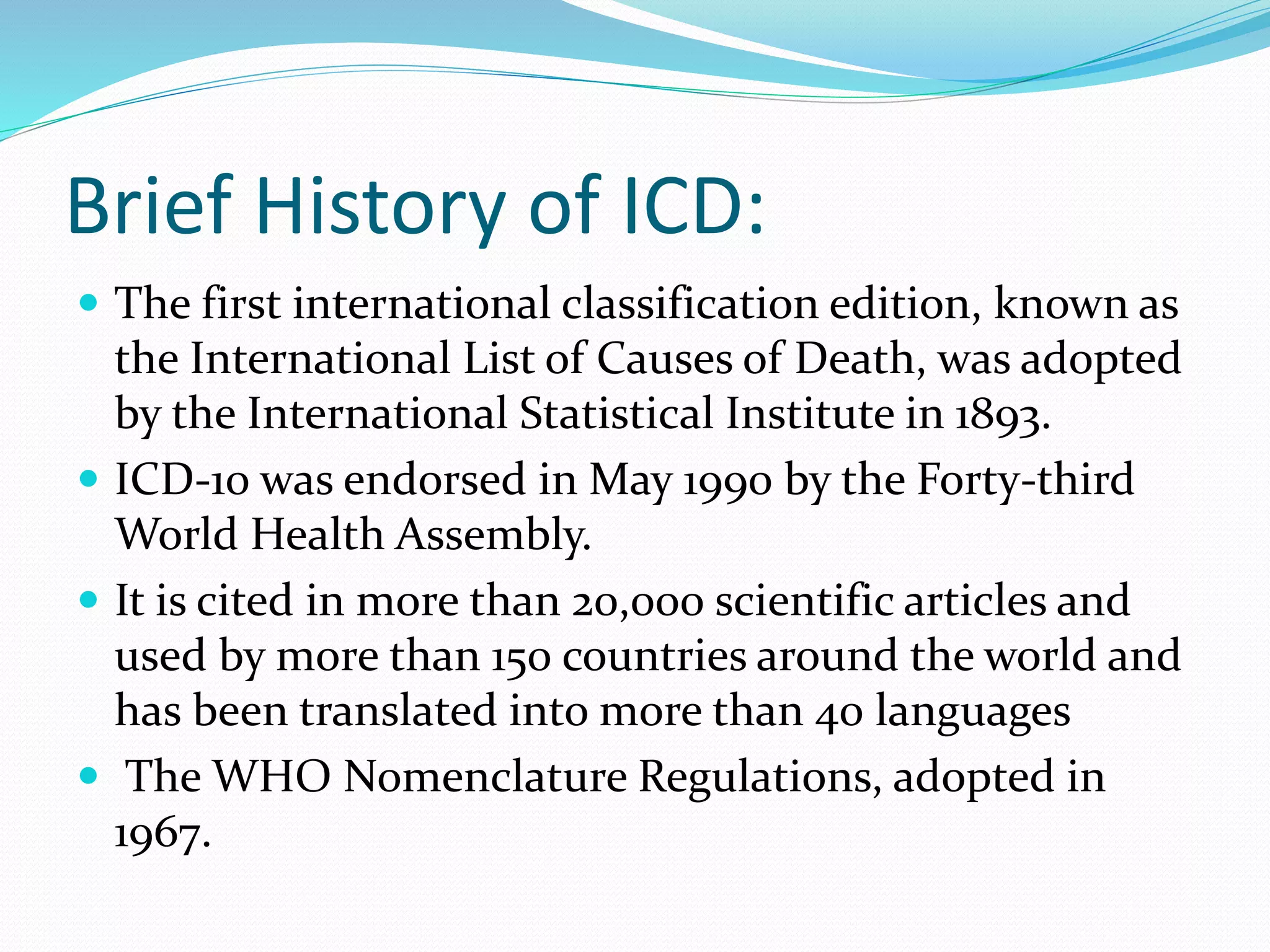
![ICD-10 MAIN CATEGORIES:
F0: Organic, including symptomatic, mental
disorders.
F1: Mental and behavioural disorders due to use of
psychoactive substances.
F2: Schizophrenia, schizotypal and delusional
disorders.
F3: Mood [affective] disorders.
F4: Neurotic, stress-related and somatoform disorders.
F5: Behavioural syndromes associated with
physiological disturbances and physical factors.](https://image.slidesharecdn.com/classificationofmentaldisorders-210527061015/75/Classification-of-Mental-Disorders-6-2048.jpg)
